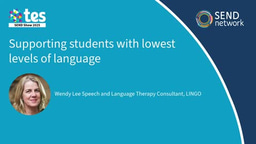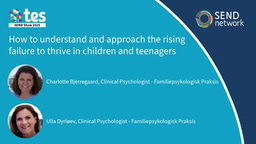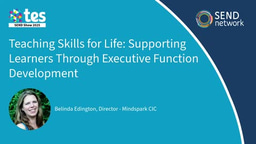Delivering high quality early years provision on a budget: Funding sources

Introduction
The overarching principle of this series has been focused upon delivering high quality early years funding on a budget. However, sometimes you may need to purchase specific and/or specialist equipment and resources which will have some financial implications for your setting. The fourth and final part of this series will look at how you could raise money for your setting for such instances where you may need to buy some resources or you would like to take the children on a trip. I will also highlight some potential avenues of funding that you may be able to access, before drawing this series to a close.
Fundraising
Fundraising can be a fun and effective way to raise money for your setting. You could have a particular goal in mind, such as raising money to buy new outdoor equipment or to take the children on a trip. There are several ways to fundraise, which could include:
- Summer/winter fetes - can be held at your setting, either inside or outside. You can have stalls where you could sell toys/resources you no longer need, have facepainting and a range of fun games for children and their families. You could reach out to your community and ask for donations from local business/attractions for tombola prizes.
- Cake sales - can be a great way to raise some money for the setting. You can bake some cakes with the children to sell and/or parents to bake with their children at home and bring them into the setting. Just be aware of any allergies within your setting, such as nuts and where necessary, request that anything brought into the setting is nut free.
- Sponsored events - can be a fun way to include the children in your setting in raising money. You could hold sponsored events and ask parents and other family members to sponsor their child. Sponsored events could include “toddler toddles” where you take the children on a walk or a “trike ride” where children take in turns going around the playground on trikes or bikes. Whatever sponsored event you decide to hold, make sure that it is accessible and inclusive for all children so that everyone can participate in them.
There are lots of different ways you can fundraise, where possible try and include children and their parents/families in as many ways as you can, so that it feels like a whole setting activity where everyone has a voice and feels included.
Local authority funding
Your local authority may be able to provide you with some additional financial support, particularly if you are working with children with SEND. Funding can vary between different local authorities, so you should always check to see what support is available to you within your area. Here are some of the common funding sources that are typically available to early years settings:
- Disabled Access Fund (DAF) - if a young child is aged between 2-4 years old and in receipt of Disability Living Allowance (DLA), and also receives the government funded 15 hours free childcare entitlement, then you can apply for DAF. This funding is usually a one-off payment, per year of £910. The setting can use this money to help them to increase access to early years education and childcare for a child with SEND, to make reasonable adjustments and to purchase specialist equipment and resources.
- Early Years Pupil Premium (EYPP) - is a government funding program that provides additional financial support to settings for children who are considered to be socio-economically disadvantaged. The funding can be used for various purposes such as targeted intervention and support, extra resources and equipment, increased staffing ratios and staff training. The main purpose of EYPP is to close the attainment gap of disadvantaged children, therefore the funding should be used to enhance their access to early years education, to support their learning and development and improve their overall outcomes.
- Education Health Care Plan (EHCP) - Often children who have been granted a EHCP will be allocated a band of funding, dependant on their level of needs. This funding can be used to provide things such as additional staff to help them access learning opportunities and/or meet their personal care needs, to purchase specific resources and equipment, as well as being used for staff training directly related to supporting the child.
- Inclusion team – your local authority may have an inclusion team, who will provide support to early years settings and schools. One strand of their service is to provide specialist support to children with SEND. Some local authorities may have access to discretionary funding that can help you to make any reasonable adjustments within your setting that cannot be covered by any other sources of available funding.
- Multi-agency working - for some children with SEND, there are a team of professionals working across different agencies, such as health, care and education, who support them. Different bodies of funding may be available to specific professionals, which could be shared within the setting to support the child. For example, if a child has an occupational therapist who recommends that a child needs specialist equipment while they are at the setting, they may be able to provide the setting with it (often on a loan basis). During multi-agency meetings, it is beneficial to discuss access to funding and where it is best placed (and where possible shared across agencies) to support a child.
Conclusion
This series has focused on how you can deliver high quality early years provision on a budget. Across the series we have looked at cost effective ways to create universal inclusive practice, provided suggestions of learning opportunities and experiences as well as creating an enabling outdoor environment. This final part of this series has focused on how you can potentially raise money for the setting and access funding for activities and resources where there is not a more cost effective alternative available.
Fundraising can be a fun and fast way to raise money for your setting for specific activities, events, equipment and/or resources. In addition to fundraising, you could potentially get some financial support from your local authority. However, as I stated earlier within this article; each local authority will have their own funding sources and criteria to be able to access them. Therefore, always check what is available within your locality. Likewise, multiagency working is also a good opportunity to share funding, where possible, as the ultimate goal is to support the child. Again, this may not always be an option, but it is certainly worth exploring to see what is available to your setting.
I would like to conclude this series by reiterating how important you are as a practitioner in being able to ensure the delivery of high-quality provision. You are the most valuable resource, and it is your approach to practice which can make a difference in the outcomes for the children within your care. Even on the smallest of budgets, with minimal resources, your creativity, passion and resourcefulness will raise the quality of any practice.





Please sign in or register for FREE
If you are a registered user on SEND Network, please sign in